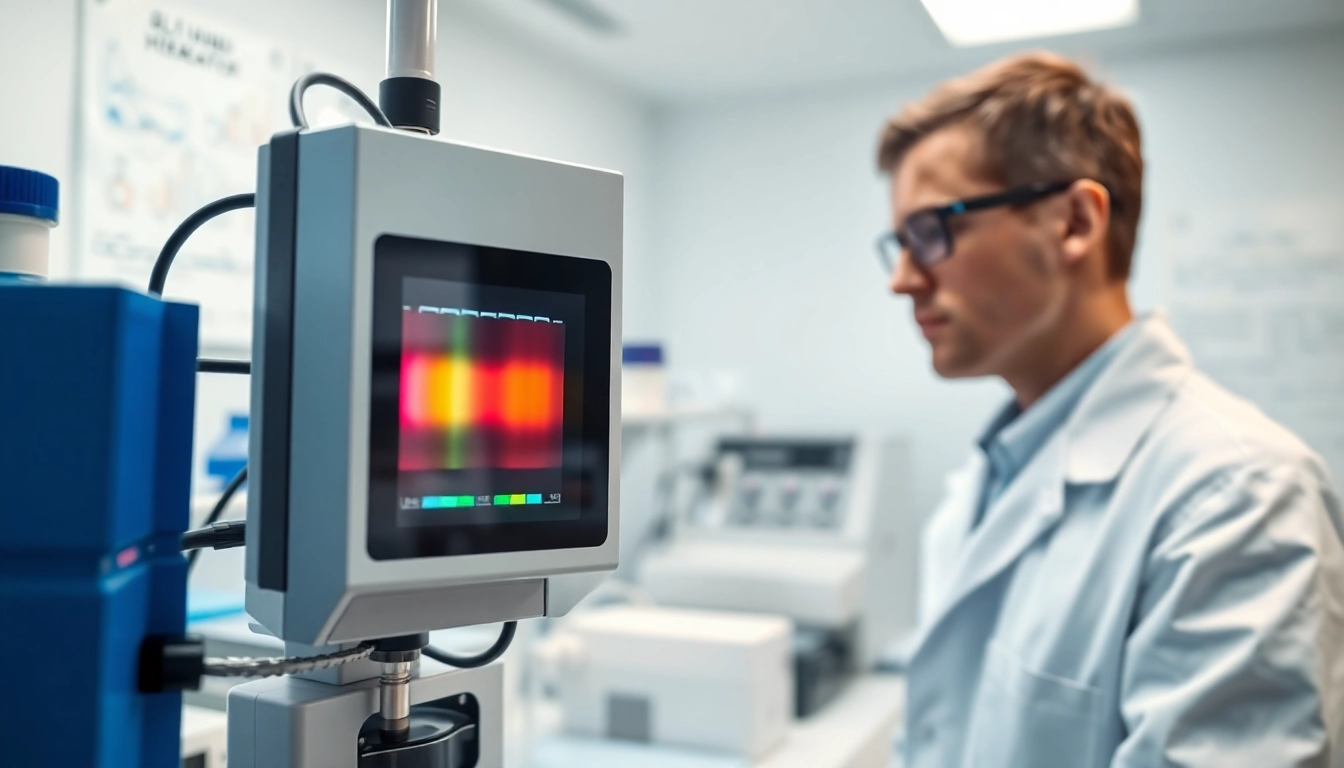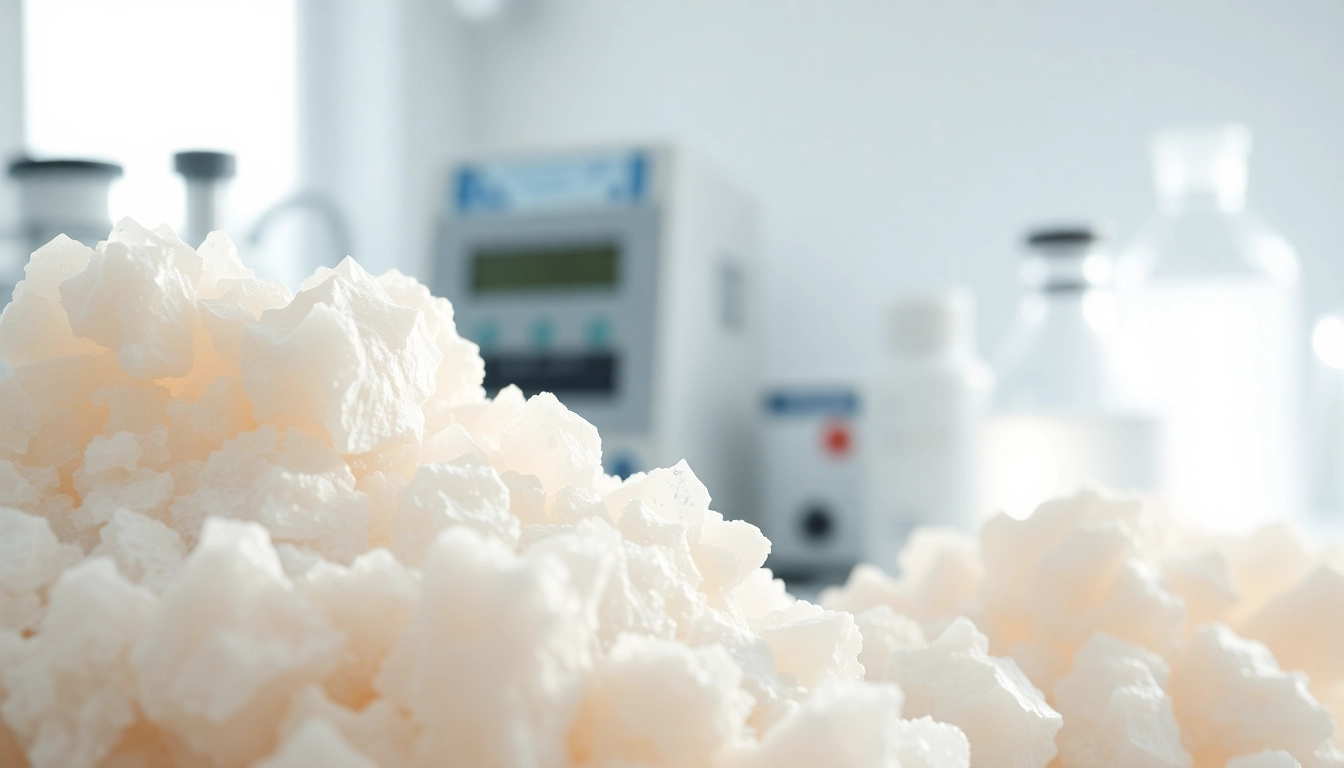Understanding Hydrogen Peroxide Detection
Hydrogen peroxide (H2O2) is a powerful oxidizing agent widely used across various industries, from healthcare to food processing. As its applications grow, so does the necessity for effective detection methods to ensure safety and compliance with health regulations. Implementing precise Hydrogen Peroxide detection systems is vital to mitigate risks associated with exposure and accidents in workplaces. This article delves into the intricacies of hydrogen peroxide detection, covering its importance, various detection techniques, implementation strategies, and best practices for maintaining accuracy.
What is Hydrogen Peroxide?
Hydrogen peroxide is a chemical compound consisting of two hydrogen atoms and two oxygen atoms (H2O2). It is a colorless liquid and appears as a slightly viscous fluid. Known primarily for its use as a bleaching agent and disinfectant, hydrogen peroxide is a versatile chemical that plays a crucial role in numerous sectors, including:
- Healthcare: For sterilization and disinfection purposes.
- Manufacturing: In the production of textiles, paper, and bleaching agents.
- Food processing: As a sanitizer during food preparation.
- Environmental applications: To treat wastewater and remediate contaminated sites.
The Importance of Detection
Effective detection of hydrogen peroxide is paramount for several reasons:
- Safety: High concentrations of hydrogen peroxide can pose serious health risks, including skin burns, respiratory issues, and eye damage. Accurate detection is crucial for ensuring the safety of personnel.
- Regulatory Compliance: Many industries are subject to safety regulations that necessitate monitoring hazardous substances, including hydrogen peroxide. Non-compliance can result in severe penalties.
- Process Optimization: In industrial settings, real-time monitoring of hydrogen peroxide levels can help optimize manufacturing processes, reducing waste and enhancing efficiency.
- Environmental Protection: Knowing the concentrations of hydrogen peroxide released into ecosystems is essential to mitigate environmental damage.
Common Uses in Industries
Hydrogen peroxide’s versatility has led to its widespread adoption in various industries:
- Healthcare: Used for cleaning surfaces and sterilizing medical instruments.
- Cosmetics: Incorporated into products for teeth whitening and skin lightening.
- Agriculture: Employed as a disinfectant for irrigation water and as a herbicide.
- Textile Industry: Utilized for bleaching textiles and as a fabric whitener.
- Pulp and Paper Industry: Used in pulp bleaching processes to enhance whiteness and reduce chemical pollution.
Techniques for Hydrogen Peroxide Detection
Various techniques exist for hydrogen peroxide detection, each with its benefits and limitations. Understanding these techniques is essential for selecting the appropriate method for specific applications.
Colorimetric Methods
Colorimetric methods rely on the presence of hydrogen peroxide to induce a color change in a detection solution. Typically, a color reagent changes hue based on the hydrogen peroxide concentration. This method is advantageous due to its simplicity and ease of use; however, it may require careful handling as it can be affected by various environmental conditions.
Common reagents include titanium(IV) oxide and permanganate. Using these reagents, concentrations can be measured via spectrophotometry, providing quantitative results that can be compared against known standards.
Electrochemical Sensors
Electrochemical sensors measure the current produced by the oxidation or reduction reactions of hydrogen peroxide at an electrode. These sensors provide rapid and sensitive detection and can operate continuously, making them ideal for process control applications.
Recent advancements in nanomaterials have enhanced the performance of electrochemical sensors. For example, incorporating platinum nanoparticles significantly increases the sensor’s sensitivity and selectivity, detecting hydrogen peroxide even at trace levels.
Optical Sensing Techniques
Optical sensing techniques utilize light absorbance or fluorescence to detect hydrogen peroxide levels. These methods are particularly valuable in environments where traditional sampling may not be feasible.
Fiber-optic sensors offer a non-invasive way to monitor hydrogen peroxide concentrations in real-time. These sensors operate by embedding a sensitive dye into an optical fiber that changes fluorescence intensity based on the hydrogen peroxide concentration. This method allows for rapid responses and can be implemented in harsh environments where other sensors may fail.
Implementing Detection Systems
Implementing hydrogen peroxide detection systems requires careful planning and consideration of various factors to ensure effectiveness and compliance.
Designing a Hydrogen Peroxide Detection Strategy
Designing a detection strategy involves several key steps:
- Assessment of Needs: Identify how hydrogen peroxide is used in your facility and what concentrations are present.
- Selection of Detection Method: Choose the most suitable detection technique based on detection range, response time, and environmental considerations.
- Location and Installation: Determine optimal placement for sensors to ensure accurate readings. This may involve installing sensors near points of use or in areas where leaks are likely to occur.
- Integration with Existing Systems: Ensure that the detection system works in conjunction with other safety measures, such as alarms and ventilation systems.
Integration with Safety Protocols
Detection systems need to be integrated into the overall safety management protocols. This involves:
- Establishing emergency procedures in the event of a hydrogen peroxide leak.
- Regularly updating safety data sheets (SDS) and ensuring they are accessible to all personnel.
- Conducting routine safety audits to evaluate the effectiveness of detection systems and revise protocols to improve safety.
Training Personnel on Detection Methods
Personnel training is a critical component of safety management. Employees should be educated about:
- The importance and benefits of hydrogen peroxide detection.
- Operating procedures for detection equipment.
- Emergency protocols and response measures if hydrogen peroxide levels exceed safe limits.
Regularly scheduled refresher courses will reinforce knowledge and keep personnel updated on the latest safety procedures and detection technologies.
Challenges in Hydrogen Peroxide Detection
While hydrogen peroxide detection is essential, various challenges can complicate effective monitoring efforts. Understanding these challenges allows organizations to mitigate risks and enhance detection accuracy.
Interference from Other Chemicals
Hydrogen peroxide can easily react with other chemicals in the environment, leading to false readings. For instance, substances like acetone and certain alcohols can interfere with colorimetric detection systems, making it difficult to ascertain accurate hydrogen peroxide levels.
To address this challenge, it is vital to select detection methods that offer high specificity for hydrogen peroxide, minimizing the likelihood of cross-reactivity.
Environmental Factors Affecting Accuracy
Environmental conditions such as temperature, humidity, and pressure can significantly affect the performance of detection systems. For example, certain electrochemical sensors may experience decreased sensitivity at higher temperatures.
It is crucial to evaluate the specific environmental conditions in which detection systems will operate and choose sensors designed to function optimally within those parameters.
Maintenance of Detection Equipment
Regular maintenance is essential to ensure accurate and reliable hydrogen peroxide detection. Sensors may degrade over time, affecting their accuracy. Scheduled calibration and routine checks are necessary to maintain optimal equipment performance.
Documenting maintenance activities and sensor performance can provide insight into equipment lifecycle and necessary adjustments.
Best Practices for Accurate Detection
To ensure the highest accuracy in hydrogen peroxide detection, organizations should adhere to best practices in both setup and ongoing monitoring.
Regular Calibration and Testing
Automatic calibration of sensors should be performed at set intervals, and spot checks should be conducted to verify performance against known standards. Any discrepancies should prompt further investigation and necessary adjustments.
Data Interpretation and Analysis
Monitoring data should be collected and analyzed regularly to identify trends or anomalies. Data analytics can provide insights into typical exposure levels, which can inform operational adjustments and environmental health assessments.
Employing advanced data analysis tools can enhance the ability to interpret large datasets, leading to more informed decision-making regarding hydrogen peroxide management and safety protocols.
Compliance with Safety Regulations
Organizations must stay updated with regional and national safety regulations pertaining to hydrogen peroxide usage and detection. Regularly reviewing regulatory changes ensures compliance and helps avoid legal issues associated with improper monitoring practices.
Establishing a culture that prioritizes safety and compliance fosters a work environment where employees are aware of the risks associated with hydrogen peroxide and the importance of effective detection methods.



